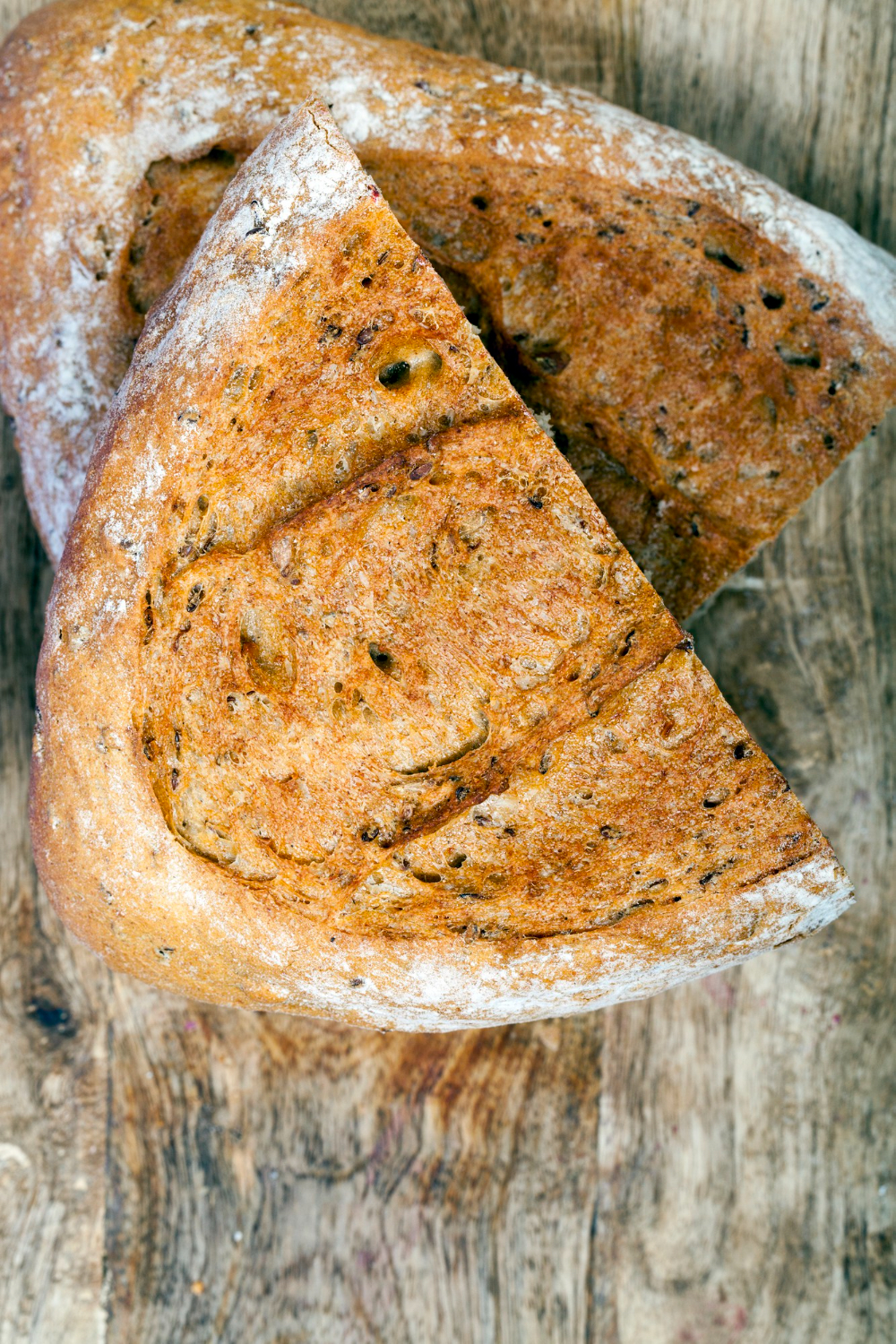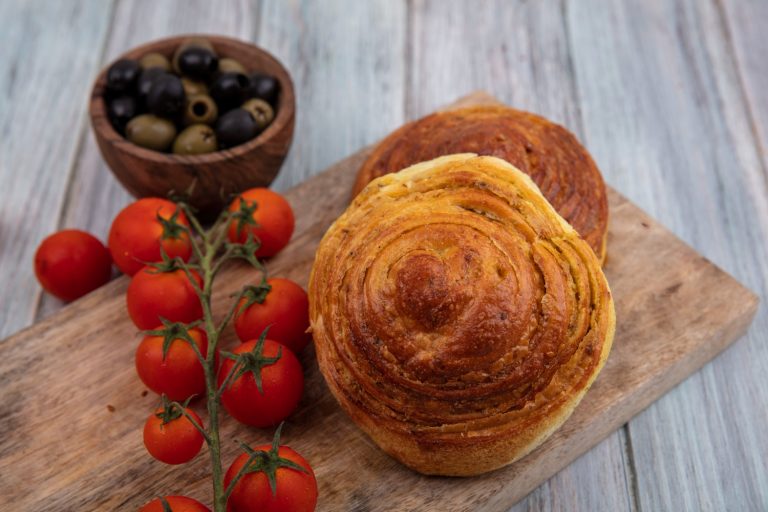Dried vs Fresh Herbs in Sourdough Bread: Which Works Better?
Fresh and dried herbs substantially affect how your sourdough bread tastes and feels. Home bakers often struggle with this choice while testing herbs in their bread. Each type brings its own benefits and challenges to the table. The right herbs can turn a simple sourdough loaf into something wonderfully aromatic and flavorful.
This detailed piece gets into the main differences between fresh and dried herbs in sourdough recipes. You’ll discover everything about flavor strength, moisture levels, and mixing methods that work best for both types. The piece covers popular herbs like rosemary and thyme and provides expert measurements and tips to help you succeed with either choice.
The Flavor Profile: Fresh vs Dried Herbs
The flavor dynamics between fresh and dried herbs play a vital role in creating the perfect sourdough bread taste. These ingredients show substantial differences in their intensity and complexity that depend on their form and application method.
Intensity and complexity of flavors
Dried herbs deliver more concentrated flavors than fresh ones. Bakers need only one-third the amount of dried herbs to match the flavor of fresh herbs. A loaf of bread needs three teaspoons of fresh rosemary, but one teaspoon of dried rosemary is enough.
Key flavor characteristics:
- Fresh herbs create bright, vibrant flavors that hit immediately
- Dried herbs give deeper, more concentrated taste notes
- Woody herbs like rosemary and thyme keep their flavor after drying
- Leafy herbs such as basil and parsley taste better fresh
How cooking affects herb flavors
Fresh and dried herbs react differently during baking. Heat-resistant dried herbs release their flavors steadily throughout the baking process. Fresh herbs lose their strength quickly, especially when you have delicate varieties such as basil and tarragon that don’t handle prolonged heat well.
| Herb Type | Heat Response | Best Addition Time |
|---|---|---|
| Dried Herbs | Stable, releases flavor slowly | Early in mixing process |
| Fresh Herbs | More volatile, sensitive to heat | During final mixing |
Effect on sourdough bread taste
The right moment to add herbs is a vital factor in creating the bread’s final flavor. Dried herbs need to mix during the original dough preparation to blend completely and develop their flavors as fermentation happens. Time is flavor in bread baking, and the long fermentation lets herbs release their essence throughout the dough.
Dried herbs should mix with flour before any wet ingredients come in to develop the best flavors. This gives even distribution and lets herbs hydrate fully during fermentation. Fresh herbs work better when added at the end of mixing to keep their unique flavors intact.
Moisture Content and Dough Consistency
Moisture management is a vital part of creating perfect sourdough texture with herbs. Bakers must think over the dough’s water content to keep optimal hydration levels between 70-90%.
Fresh herbs’ moisture contribution
Fresh herbs add extra moisture to the dough and impact its hydration ratio. Bakers must consider these herbs’ natural water content during preparation. The best results come from air-drying chopped herbs for 10-15 minutes before adding them to the dough.
Adjusting hydration for dried herbs
Dried herbs have minimal effect on dough hydration. This makes them easier to work with from a moisture management point of view. The simple hydration calculation for sourdough follows this pattern:
| Component | Calculation |
|---|---|
| Basic Hydration | (Weight of Water ÷ Weight of Flour) × 100 |
| Adjusted Hydration | Include starter moisture content |
The recipe’s water content should be reduced by approximately 2-3% to compensate for the added moisture if you use fresh herbs.
Effects on bread texture
Herbs and moisture greatly affect the bread’s final structure. Doughs with higher hydration (above 80%) create these results:
- Crusts become thinner and crispier with better caramelization
- Water content speeds up fermentation
- Dough improves its stretch and becomes more extensible
- Crumb structure opens up more
Proper moisture balance matters a lot when you work with herbs. This balance affects your dough’s workability and your bread’s final texture. Fresh herbs need extra care to manage moisture. Dried herbs give more predictable results for dough consistency.
Incorporation Techniques
Adding herbs to sourdough bread needs the right technique and perfect timing. Bakers have several tested ways to blend flavors into their loaves. These methods help create the perfect texture naturally.
Methods for adding fresh herbs
Fresh herbs need careful handling that preserves their bright flavors. You should double the amount of fresh herbs compared to dried ones in your recipes. A recipe needing 1 tablespoon of dried herbs will work better with 2 tablespoons of fresh herbs. These methods work best:
- Mix herbs during stretch and folds
- Blend them in the final mixing phase
- Layer herbs into the dough before shaping
Techniques for using dried herbs
Dried herbs are versatile and easy to use in many ways. The quickest way to use them involves pre-soaking the herbs in a small amount of water. This rehydrates them before they go into the dough. Bakers should subtract the soaking water from the recipe’s total water amount at the time of mixing.
| Stage | Method | Benefits |
|---|---|---|
| Original Mix | Combine with flour | Even distribution |
| Final Mix | Add last 2 minutes | Preserved flavor |
| Lamination | Spread on stretched dough | Visual appeal |
Timing of herb addition in the bread-making process
The moment you add herbs substantially affects your bread’s flavor profile. Early addition during the original mix lets herbs merge and develop flavors throughout fermentation. Bakers can achieve optimal results by:
- Adding dried herbs with dry ingredients for even distribution
- Including fresh herbs during the second-to-last stretch and fold
- Using the lamination technique just before final shaping
The lamination method requires bakers to stretch the dough thinly, spread herbs evenly, and fold carefully. This creates distinct layers that work especially when you have to make visually appealing swirls and patterns in the final loaf.
Shelf Life and Convenience
The choice between fresh and dried herbs in sourdough baking depends on real-world practicality. Both options create excellent results, but their storage needs and availability differ substantially.
Storage and longevity of fresh herbs
Fresh herbs need proper storage techniques to stay vibrant. Most fresh herbs remain fresh up to three weeks at 32°F (0°C) or two weeks at 41°F (5°F) with the right storage approach. Optimal storage methods differ based on herb varieties:
- Hardy herbs (rosemary, thyme, sage): Damp paper towels work best to wrap these herbs before placing them in airtight bags
- Tender herbs (parsley, cilantro): These herbs stay fresh with their stems placed in water and covered with plastic in the refrigerator
- Basil: Room temperature water storage keeps basil fresh, but it needs protection from direct sunlight
Availability and convenience of dried herbs
Dried herbs are a great way to get multiple advantages when it comes to access and storage. These herbs’ concentrated nature allows bakers to use just one-third of the amount they would need with fresh herbs, which makes them more cost-effective. Storage needs include:
| Storage Aspect | Duration | Conditions |
|---|---|---|
| Shelf Life | 6+ months | Airtight container |
| Temperature | Room temp | Cool, dry place |
| Light Exposure | Minimal | Dark storage preferred |
Cost considerations
Herb prices change with the seasons. Fresh herbs cost more by a lot in winter, which makes dried herbs a smarter choice. Here are some economical solutions:
- Growing hardy herbs indoors to get fresh herbs all year
- Drying extra fresh herbs so nothing goes to waste
- Buying dried herbs in bulk when they’re on sale
- Making frozen herb cubes from leftover fresh herbs
Fresh herbs become cheaper and more available during growing seasons. Dried herbs keep steady prices all year, which helps bakers plan their costs better. Your choice depends on how often you bake, your storage space, and what herbs you can find nearby.
Conclusion
Fresh herbs and dried herbs each add their own magic to sourdough bread making. Dried herbs pack concentrated flavors and give consistent results. Fresh herbs bring bright, vibrant notes and make your bread look amazing. Your choice between them comes down to a few things: how you handle moisture, when you add them, storage space, and what’s in season. Getting the herbs right means paying attention to the amounts – you’ll just need one-third of dried herbs compared to fresh ones. The timing matters too. You should add them at the right moment to get the best flavors and make sure they spread evenly in your dough.
Most bakers pick dried herbs because they’re easy to find all year and last longer. Fresh herbs really shine during growing season with amazing smells and looks. Both choices make fantastic sourdough when you use them right. You can create unique, tasty loaves that match your priorities and what you have on hand. Raise your bread and pizza game with an authentic artisanal sourdough starter from The Yeast We Can Do. Our small-batch starter helps passionate home bakers and restaurant owners create exceptional bread and pizza with that perfect tangy flavor and signature crust. You can change your baking today – just email john@theyeastwecando.com to get your hands on our premium sourdough starter.
FAQs
Can both dried and fresh herbs be used in bread recipes?
- Yes, both dried and fresh herbs can be effectively used in bread recipes. When using fresh herbs, it’s advisable to increase their quantity compared to dried herbs. For instance, in recipes like Pesto Flatbread, fresh herb pesto is incorporated directly into the dough.
What is the best time to add herbs to sourdough bread dough?
- Herbs should be added to sourdough after the initial 30-minute rest period known as autolyze, where the flour absorbs water. For example, chopped rosemary can be added before starting the stretch and fold technique to integrate it evenly throughout the dough.
How should dried herbs be added to sourdough bread?
- Dried herbs should be added during the last set of stretch and folds in the bread-making process. This timing helps to distribute the herbs evenly without compromising the dough structure. For softer ingredients like roasted garlic purée, they should be mixed in when the starter and salt are added to the autolysed dough.
Is there a difference in using fresh herbs compared to dried herbs in cooking?
- Yes, there is a notable difference. Dried herbs have a concentrated flavor due to the drying process, which alters their taste and impact on dishes. Fresh herbs typically offer a more vibrant and “herbier” flavor, making them preferable for achieving the freshest taste in dishes like bread.






